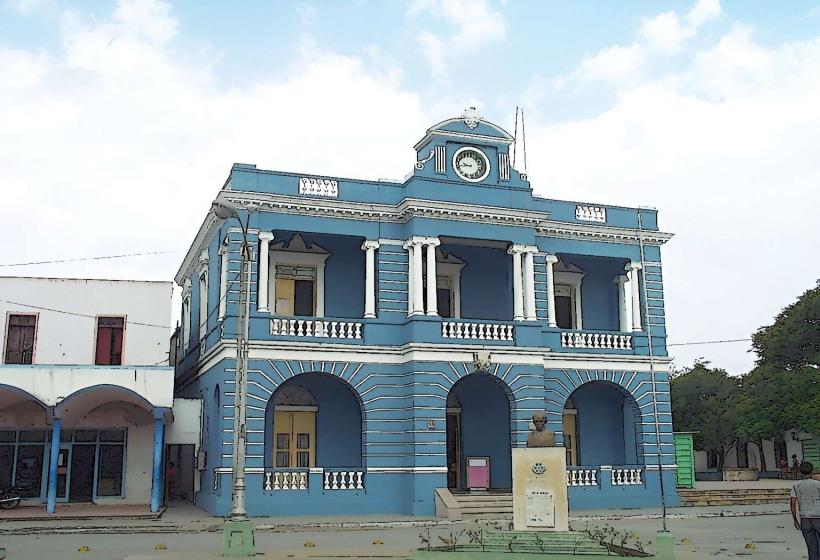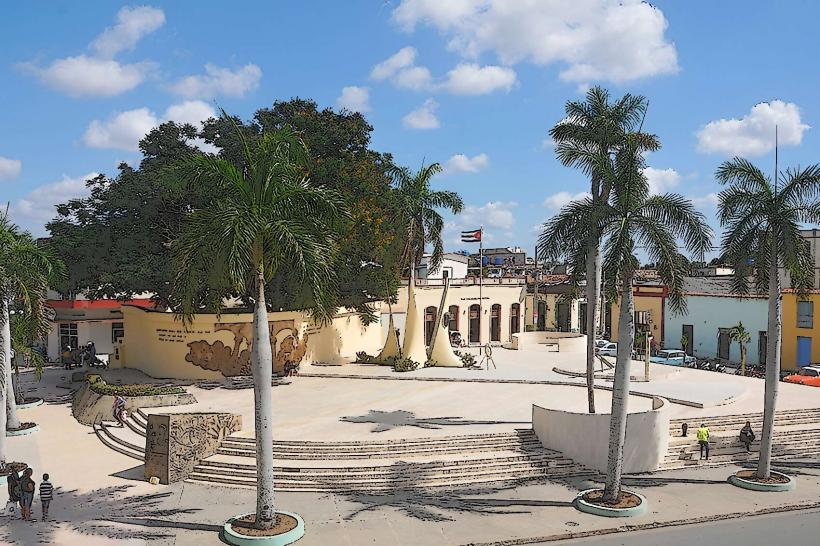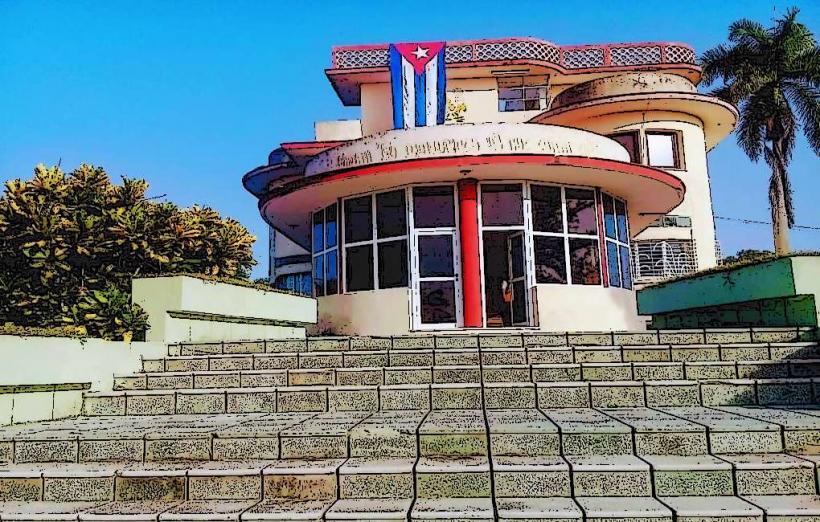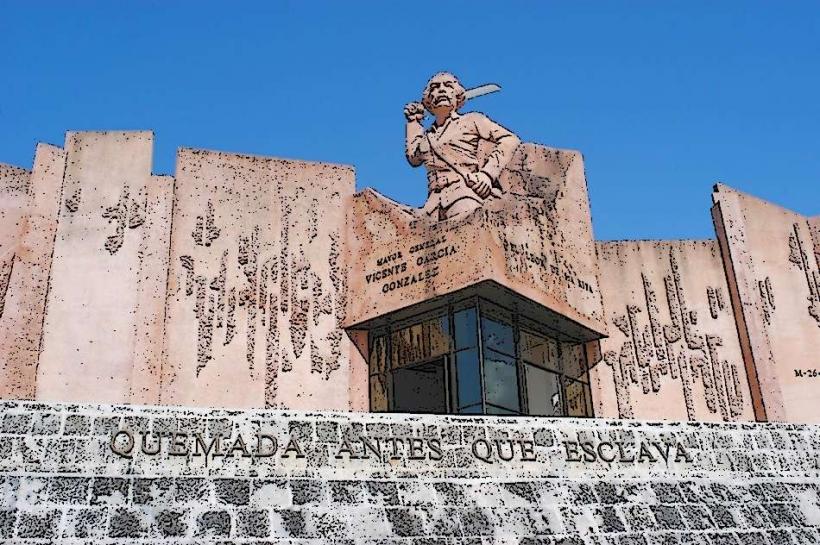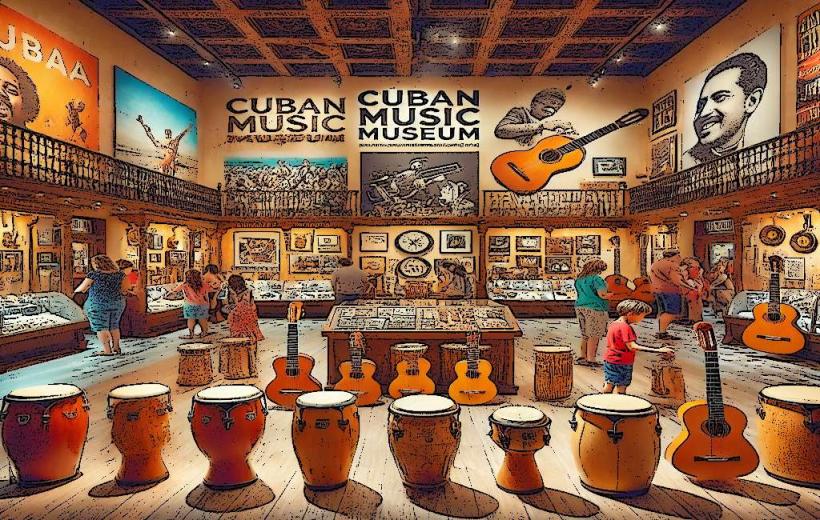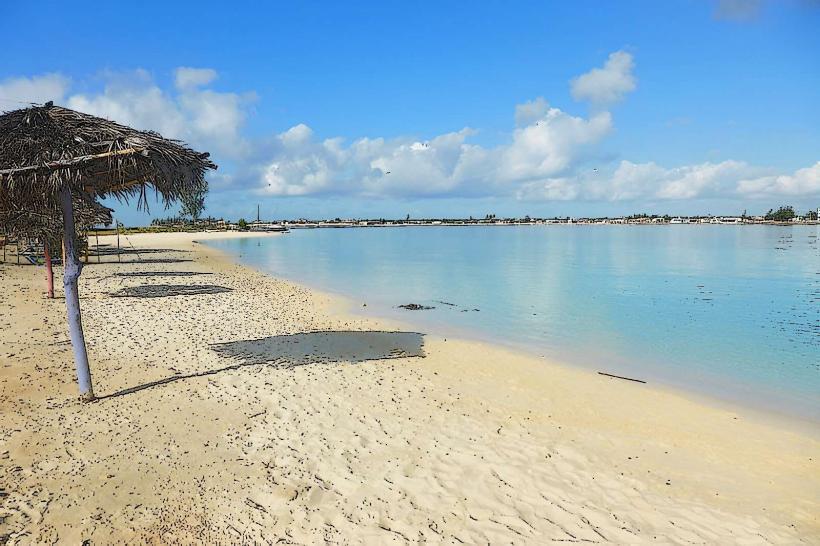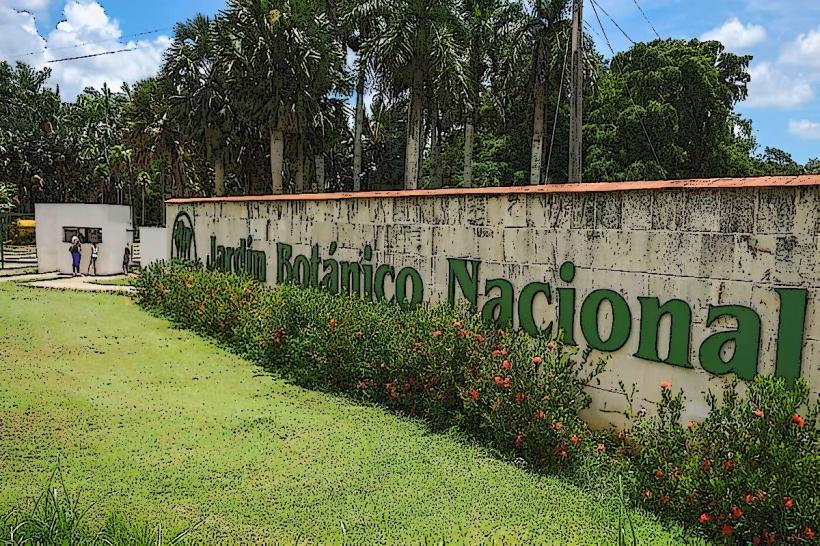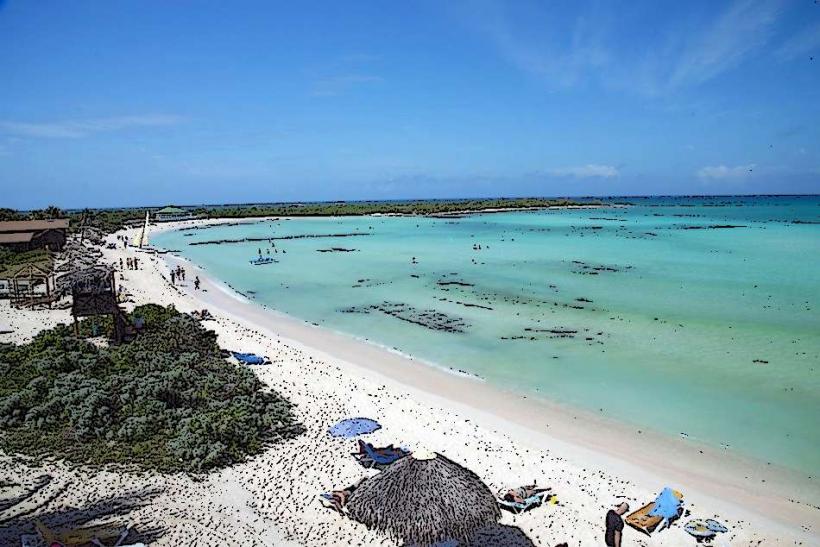Information
City: Las TunasCountry: Cuba
Continent: North America
Las Tunas is a city located in the eastern part of Cuba, serving as the capital of Las Tunas Province. It is an important regional hub, known for its agricultural and industrial activities, as well as its rich cultural life and historical significance. Though not as internationally renowned as Havana or Santiago de Cuba, Las Tunas offers a distinctive Cuban experience. Here's a detailed overview of Las Tunas:
1. Geography and Climate
- Location: Las Tunas is situated in eastern Cuba, approximately 670 kilometers (420 miles) east of Havana and around 280 kilometers (175 miles) west of Santiago de Cuba. The city lies near the Caribbean coast, bordered by the provinces of Holguín to the west and Camagüey to the east.
- Climate: Las Tunas has a tropical climate, with hot and humid conditions throughout the year. The average temperature ranges from 24°C to 31°C (75°F to 88°F). The rainy season occurs between May and October, while the rest of the year remains relatively dry. The city is subject to occasional tropical storms and hurricanes during the summer and fall.
2. History
- Colonial Beginnings: The area now known as Las Tunas was originally inhabited by the Taino indigenous people before the arrival of Spanish colonizers in the early 16th century. The town was founded as Villa de la Santísima Trinidad in 1796, though it remained a small and quiet settlement for many years.
- Growth and Development: Las Tunas began to grow in importance during the 19th century as a center for agriculture and trade, especially in the production of sugarcane and tobacco. It was also involved in the Cuban Wars of Independence, which were pivotal in the island's struggle for freedom from Spanish colonial rule.
- Cuban Revolution: Las Tunas played a role in the Cuban Revolution, with the surrounding region being part of the area where revolutionary forces fought against the Batista regime. After the success of the revolution in 1959, the city saw rapid development in both its infrastructure and its role as a regional economic center.
3. Key Attractions and Landmarks
- Plaza Martí: The central square in Las Tunas is named Plaza Martí, in honor of José Martí, Cuba’s national hero. The square is surrounded by important buildings such as the Municipal Palace and Cultural Center, making it a focal point of the city’s social and cultural life.
- Teatro Tunas: The Teatro Tunas is the city's main theater and a significant cultural venue. It hosts a variety of performances, including Cuban music concerts, dance performances, and theatrical productions. The theater's historical architecture adds to its charm, making it a popular destination for visitors interested in Cuban performing arts.
- Museo Provincial de Las Tunas: This museum showcases the history and culture of Las Tunas Province, with exhibits ranging from pre-Columbian artifacts and colonial history to revolutionary memorabilia. The museum is a great place to learn about the region's past and its role in Cuba’s development.
- Cueva de los Indios: Located near the city, the Cueva de los Indios (Cave of the Indians) is an important archaeological site with Taino petroglyphs. The cave offers a glimpse into the lives of the island’s indigenous people, and it’s a popular site for visitors interested in Cuba’s pre-Columbian history.
- Parque Las Tunas: This park is located in the city center and is a peaceful spot for locals and tourists alike. It features walking paths, green spaces, and statues, making it an ideal location for a leisurely stroll or to experience daily Cuban life.
4. Culture and Traditions
- Music and Dance: Las Tunas has a vibrant music scene, with traditional Cuban genres like son, salsa, and bolero being popular throughout the city. The region has produced many notable Cuban musicians, and local festivals often feature live music and dancing. The Festival de la Canción Tunera is one of the most important annual music events, celebrating the region's musical traditions.
- Art: Las Tunas has a strong artistic community, and visitors can find galleries showcasing the work of local artists, especially in visual arts and crafts. Cuban-style murals and street art are also common throughout the city, reflecting the creativity of the local population.
- Handicrafts: The city is known for producing traditional Cuban crafts, including wooden carvings, woven goods, and ceramics. These handmade items often reflect Cuban culture and make for popular souvenirs among tourists.
- Festivals: In addition to the Festival de la Canción Tunera, Las Tunas celebrates several other cultural events, such as Carnaval de Las Tunas, a lively celebration of Cuban music, dance, and culture. The carnival features parades, costumes, and performances, attracting both locals and visitors.
5. Cuisine
- Cuban Staples: As with most of Cuba, Las Tunas offers a variety of traditional Cuban dishes, including ropa vieja (shredded beef), arroz con pollo (chicken with rice), and tostones (fried plantains). These dishes are commonly found in local restaurants and homes throughout the city.
- Tropical Fruits: Las Tunas, with its warm climate, is abundant in tropical fruits such as mango, guava, papaya, and coconut. These fruits are often used in refreshing drinks and desserts, including jugos naturales (natural juices) and fruta bomba (papaya desserts).
- Seafood: While not as coastal as other Cuban cities, Las Tunas does have access to fresh seafood. Fish, lobster, and shrimp are commonly served in local restaurants, and traditional seafood dishes such as camarones al coco (shrimp in coconut sauce) are popular.
- Sweets: Desserts in Las Tunas often feature sugarcane and coconut, as well as guava. Traditional Cuban sweets such as turrón (coconut and sugar candy) and dulce de leche (milk-based dessert) are commonly enjoyed by locals.
6. Economy
- Agriculture: Las Tunas Province has a strong agricultural economy, with sugarcane, tobacco, and citrus fruits being the primary crops. The region is known for its vast sugar plantations, which were historically a central part of Cuba’s economy.
- Livestock: The region also has a significant livestock industry, producing beef, pork, and dairy products. Cattle farming is a common practice in rural areas surrounding the city.
- Industry: Las Tunas has some light manufacturing industries, particularly related to the agriculture and construction sectors. The city has a number of factories producing food products, construction materials, and textiles.
- Tourism: Although Las Tunas is not a major tourist hub compared to other Cuban cities, it has started to see an increase in tourism, particularly in the areas of ecotourism, cultural tourism, and agriculture tourism. The city’s proximity to natural parks and historical sites makes it a good base for those interested in exploring the region.
7. Transportation
- By Car: Las Tunas is easily accessible by car from other major cities in Cuba. The city is well-connected to Havana and Santiago de Cuba by highways, with a drive time of about 9 hours to Havana and 5 hours to Santiago.
- By Bus: Viazul operates buses that connect Las Tunas to other parts of Cuba, including Havana and Santiago de Cuba. The bus system is a popular and affordable way to travel around the island.
- By Air: Las Tunas has a small airport (Aeropuerto de Las Tunas) with limited domestic flights. The closest international airport is in Holguín, around 1 hour away by car.
8. Ecotourism and Outdoor Activities
- Natural Reserves: Las Tunas is located near several protected natural areas that are ideal for hiking, birdwatching, and exploring Cuba’s rich biodiversity. One popular site is the Bahía de Naranjo, a protected bay that offers stunning views and opportunities for outdoor recreation.
- Beaches: While Las Tunas is not known for its beaches, the nearby areas of Playa Covarrubias and Playa Jibacoa are attractive coastal destinations where visitors can enjoy swimming, snorkeling, and relaxation.
- Hiking and Trekking: The surrounding Sierra de Cubitas mountains offer excellent opportunities for hiking and nature walks. Visitors can enjoy exploring the mountainous landscapes and enjoying panoramic views of the region.
Conclusion
Las Tunas may not be as widely known as other Cuban cities, but it offers visitors a unique glimpse into Cuba’s agricultural heritage, musical culture, and natural beauty. With its growing tourism sector, vibrant cultural scene, and proximity to unspoiled landscapes, Las Tunas is a hidden gem for those seeking an authentic Cuban experience off the beaten path. Whether exploring its colonial history, attending a local festival, or enjoying the surrounding nature, Las Tunas offers a refreshing and less touristy side of Cuba.

